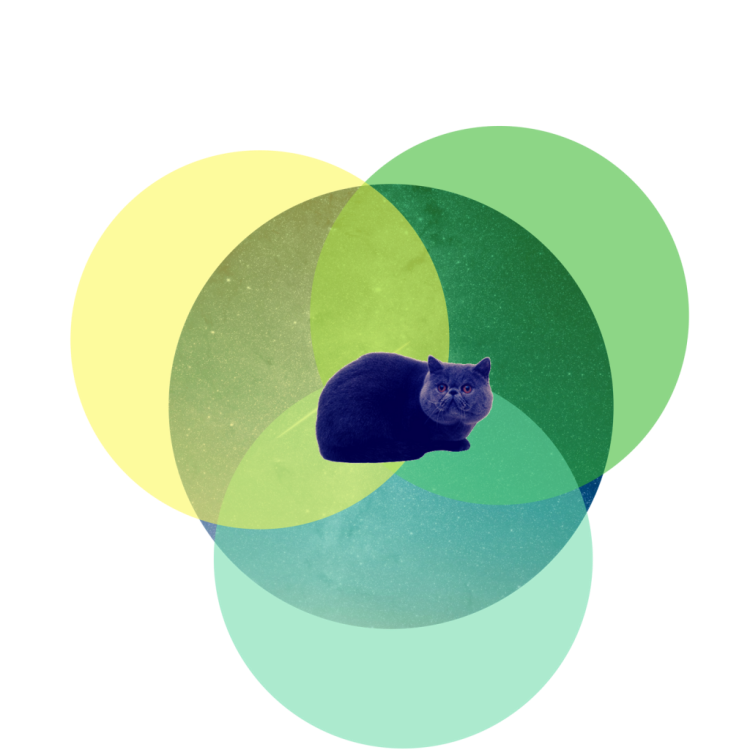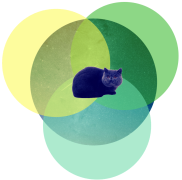In the mid-20th Century, on the remote island of Swona in Scotland, the Rosie family kept animals including a herd of cows. As the decades wore on, their children moved away and the elderly stalwarts of the family stayed on and eventually died there. Moving of the cattle from the island would have been too difficult. So when the final person on Swona died in 1974, the cows were allowed to roam free.
Forty six years have passed and the nature of the cattle has been changing. From unobserved domesticate to something else, something more – feral. Something increasingly wild.
Attempts to make an animal round up were abandoned and the animals were left to live as they wished. Roaming through the grassy sward and finding shelter amongst the increasingly broken down ruins.
There was always the expectation that they would die out over the harsh winter – it never happened. In fact, they thrived. From the original complement of eight cows and one bull their numbers expanded to 33 in ten years. A vet who visited the island once a year to inspect them from a distance found them to be in good health.
As one of an extremely small number of feral herds in the world – it wasn’t clear how they would act. All males were left uncastrated and allowed to live until maturity. Breeding took place freely. Such things would never happen on a farm. Now without husbandry they were forced to improvise. Their social organisation was completely unrecognisable, much of what we consider ‘cow-like’ behaviour, it transpires is not necessarily true to their nature.
When animal scientist Professor Stephen Hall visited in 1985, he found the cattle living in a single herd, except for the northern headland which was the preserve of an old black bull who seemed to have been banished there. This bull, likely a fallen king, was now living out his last days in obscurity.
Bulls challenge each other for access to the cows in a violent way. Visitors found the island scarred with patches of disturbed earth, where the bulls had been violently pawing and beating at the ground in displays of aggression. The island shook with their battle cries. A bull’s cry is low and guttural, heaving moan of anger and frustration that begins deep in the throat, and rises to a great reverberating crescendo, before falling away.






He might turn his head to the sky, bringing a change of timbre and break into a breathy, creaking bray, punctuated with snorts and bellows as he kicks up dirt and slams his hooves in a demonstration of his great weight and strength and rage.
During this period of civil strife, as many as four bulls might be banished at any one time and would roam together or apart on the bleak headland where the beacon beats its rhythm through the night and where terns build their nests on the churned up grasses. Alone with their testosterone, their frustrated ambitions.
In 2013, John Finlay returned to the island and witnessed an event of great significance among the cattle – the death of the banished king.

I became aware that the old black bull was lying on his side on the ground some distance from the herd. He looked dead but the odd twitch of his tail indicated that there was still some semblance of life. About an hour later, we become aware that a number of cattle being led by the young black bull had left the main herd and were making for the old bull who was obviously in a distressed state.
The group certainly gave the impression of being genuinely concerned and were nudging and making physical contact, providing some form of physical contact to him in what was a dire situation. It is difficult to find the language that can touch that experience.
Their behaviour expressed compassion, grief, comfort and the willingness to afford assistance. I can only describe the actions of the cattle as reverential.

Such glimpses into the unseen, unrecorded culture of cattle that has formed up on Swona in our absence afford us insight into the true nature of an animal too often dismissed as a dim-witted, cud-chewing automaton. They give us insight into the weight afforded to death of a species we farm and slaughter on an industrial scale.
If we do not see this behaviour among those more carefully tended, it is because we do not give them the chance: they have not the freedom to demonstrate it. They do not typically see out their lifespans to their natural conclusions.
For many months after a death, cattle will visit and revisit the bodies of the fallen – the way elephants are said to do in the African savannah. They sniff them, touch them. As the months pass and the flesh strips away and the skeleton is laid bare, they will unintentionally step upon them and break them apart. In this way the bones will be ground down and returned to the earth. An ancient ritual that we might otherwise never see.
To me, the question the cattle on Swona prompt is this: can a domesticated animal ever be wild once again?
To answer it, it first requires use to know what it means to be domesticated.
Domestication is a relationship between humans and animals that grows up over generations. This goes beyond mere taming – a beautiful, complex, fascinating process in itself at the level of the individual. The tempting, the wooing, the working at a creature’s resistance like a knot, the breaking down of fear, reluctance or defiance.
Domestication is how tameness, or something like it becomes ingrained in a species soul, through the selective breeding of an animal that impacts its future forms.
Selective breeding often centres upon a physical trait – a meatiness for example among beef cattle or chickens, speed among racehorses.


Now, left to their own devices on Swona, something profound is at work. Ten of more generations have now passed in the new kingdom of the cattle. There have been many deaths and many births. The process we call natural selection is coming back into play – perhaps for this population, for the first time in 10,000 years.
They depend now upon their own collective wisdom in breeding and face many dangers of little concern to their husbanded cousins. Very quickly certain traits can be selected for. The ability to thrive on little food, ease of calving. (Normally, with pregnant cows around half of all first time mothers will require assistance in birth). Among males, dominance and aggression. There is a term for this: ‘reverse evolution’. That is, the reversion to an ancestral form after living a return to ancestral living conditions.

I take a flask of tea outside at dawn. It’s blustery but clear, the whole land is lit with a flat yellow light. While I wait, the cattle appear over the brow of the hill, coming down to graze in a grassy hollow by the rocky strand. Their wintery coats are on their way out. Some are shedding and bedraggled still, their hair standing in riffles and cowlicks, but others are already as glossy and as sleek as conkers. They move as one animal: comfortable in each other’s company, taking long relaxed strides. They don’t see me. It doesn’t occur to them to look.
Islands of abandonment.

Extracted from: Islands of Abandonment
“What happens when humans foresake and ruin landscapes? They are never truly abandoned. Instead they are engulfed by the non-human world and they become teeming with many other foresaken wild lifeforms. The weeds, plants, insects, birds and large mammals move in and populate these places. Pushed to the brink of extinction elsewhere by the ever-expanding need for human progress – these ugly, abandoned fringes of our world are the places where these animals can finally breathe a sigh of relief.” ~ Cal Flynn
Islands of Abandonment is a book-length poem and an ode to the places humans have used, abused and then rejected due to pollution, war, or physical danger.



Love this post. So compelling
LikeLike
Reblogged this on Ned Hamson's Second Line View of the News.
LikeLike
What a lovely tale Catnip. Thanks for the research!
LikeLiked by 1 person
Very welcome Kev I’m so glad you enjoyed it 😊 😘
LikeLike